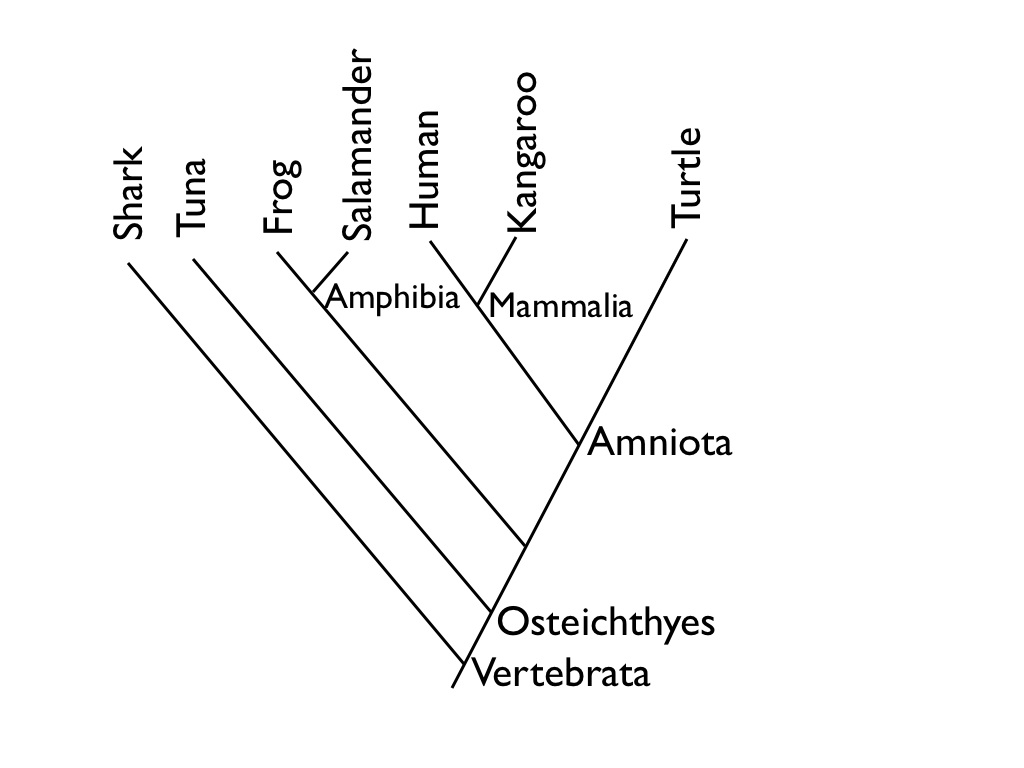What type of prokaryotic organism could be found near a deep sea thermal vent?
Archaea
Where would you find halophiles?
extreme salt conditions
List the seven taxons of classification in order from most specific to most general.
species
genus
family
order
class
phylum
kingdom
What is the definition of a species?
Organisms that breed together and produce fertile offspring.
Describe how to properly write a scientific name for an organism. What is the name of this naming system?
Use the genus and species taxons. The genus must be capitalized and the species lower case. It must be underlined or typed in italics. For example: Homo sapiens. This naming system is called binomial nomenclature.
A somatic cell of an organism contains 20 chromosomes. How many chromosomes will be in each new cell after cytokinesis?
20
Describe what happens to a cell during interphase.
The cell grows, performs its normal metabolic functions, prepares for division and replicates its chromosomes.
How many chromosomes are found in a human gamete?
23
What is the of process that produces sperm and egg cells? Explain how each process is different.
Sperm and egg cells are produced during gametogenesis through the process of meiosis in the gonads.
Sperm cells are produced during spermatogenesis. During this process, four haploid sperm cells are produced.
Egg cells are produced during oogenesis. During this process, one egg cell is produced and three polar bodies which degenerate.
What phase of the cell cycle is illustrated below.
Metaphse II of meiosis
Touching the leaves of the Mimosa piduca plant caues them to fold up. What is this reaction called?
Nastic response (movement)
What is the function of the xylem and the phloem?
Xylem carries water through the plant and the phloem transports sugars.
What is the meristem? What is the difference between apical and lateral meristem?
The meristem is the region of rapid cell division in the plant. The apical meristem is responsible for the upward or downward growth of shoots and roots. The lateral meristem is responsible for the thickening of the stem.
The root hair is an outgrowth of which type of cell?
epidermal cell
How can you distinguish a monocot stem from a dicot stem?
The arrangement of vascular bundles: Monocots have scattered vascular bundles which dicots have them arranged in a ring.
Which of the follwoing enzymes would function at the lowest pH? lipase, trypsin, pepsin or amylase.
Explain why.
Pepsin because it acts in the stomach which contains a low pH from the HCl.
Name two major vessels of the heart that carry oxygenated blood.
pulmonary vein and aorta
Describe what occurs in the large intestine.
Complete absorption of nutrients
Production of vitamins by bacteria (B,K)
Absorption of water
Stores undigested material for excretion
Describe the process of gas exchange in the lungs.
Oxygen moves through the respiratory tract to the alveoli. Each alveoli is surrounded by capillaries. Blood diffuses from the alveoli into the blood stream where it attached to hemoglobin on red blood cells are is carries to the tissues of the body.
What is the role of bile in digestion? Why is it important.
Bile emulsifies fats. It breaks large globs of fat into small globules of fat. This is a form of mechanical digestion. This increases the surface area of the fat for lipase to act. This allows digestion to occur faster.
What is a cladogram?
A diagram that shows the evolutionary history of groups of species.
Which type of selection favours organisms at opposite extremes of a trait over individuals with intermediate versions?
disruptive selection
Explain the difference between homologous, analogous and vestigial features.
Homologous - share common origin but serve different functions (eg. human and whale arm/fin bone structure)
Analogous - similar function but a different origin (eg. wings in birds and insects)
Vestigial - non-functioning structure homologus to a fully functioning one (eg. hip bones in snakes)
Is the frog more closely related to the tuna or salamander?
Name all the organisms in the clad containing the frog.
Is the frog or the turtle more closely related to the tuna?

The frog is more closely related to the salamander. They share a more recent common ancestor.
The organisms in the same clade as the frog include the salamander, human, kangaroo and turtle.
The turtle and frog are equally related to the tuna.
Compare the theory of evolution by acquired characteristics to the theory of evolution by natural selection.
Theory of evolution by acquired characteristics --> proposed by Jean Baptiste Lamarck.
Physiological changes that organisms acquire over their lifetime may be transmitted to their offspring.
Theory of evolution by natural selection --> propsed by Charles Darwin
Gradual process in which heritable biological traits become more or less common in a population due to the differential reproductive success of organisms interacting with their environment.